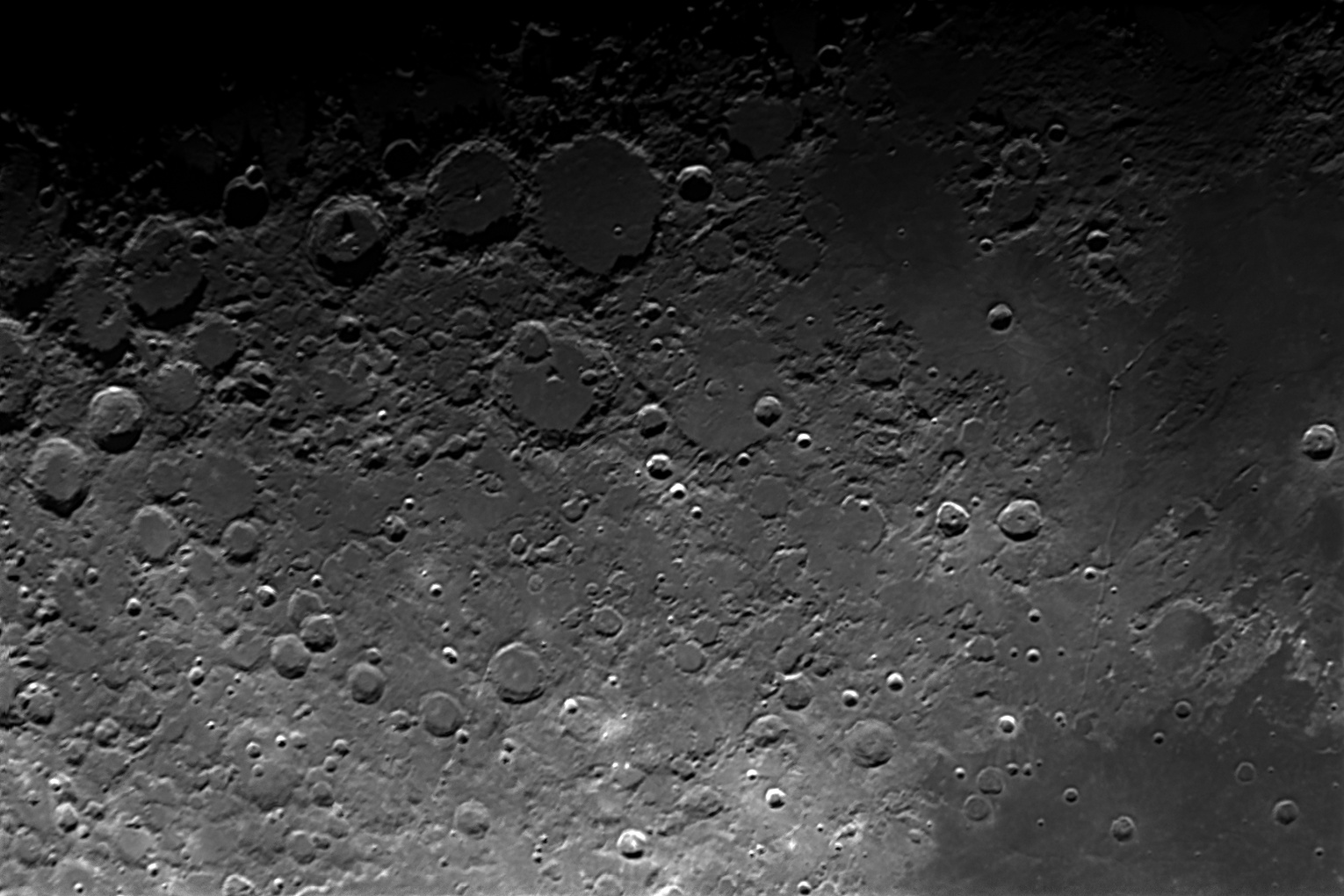
This image of the Moon shows an area in the northeast quadrant of the Moon. Mouse over this image and an annotated version of the image appears that has features shown in this image labeled.
Hipparchus is an ancient crater about 151km in diameter. The rim of Hipparchus is heavily degraded, and the western section of the rim is almost destroyed. Horrocks crater is younger, and was formed after the impact that created Hipparchus. Albategnius crater is 136 km in diameter and also very old. Notice the lofty and massive central peak in Albategnius. The crater Klein is younger than Albategnius, and Klein intrudes into the degraded wall of Albategnius. The Klein crater also displays a central peak. A noteworthy feature in this area is the almost parallel set of great scars cutting through the terrain.
The three adjacent craters Ptolemaeus, Alphonsus and Arzachel are prominent just after first quarter, and the long shadows that they display at this low angle of illumination reveal a number of interesting features. Ptolemaeus is the oldest crater, and its floor is scarred with craters. Ptolemaeus is 153 km in diameter. When Alphonsus formed, its northern rim merged with the rim of Ptolemaeus. Alphonsus is 119 km in diameter, and has a cerntral peak. Several rilles and faults cross the floor of Alphonsus. Arzachel is 97 km in diameter and is the youngest of the three craters. The walls of Arzachel are heavily terraced. One of the most interesting things about Arzachel is the off-center peak inside the crater. The object that formed Arzachel apparently hit the Moon's surface at an angle, and the eastern side of the crater walls rise to a greater height (approximately 1 km higher) than the western side of the walls.
Rima Ariadaeus is a rift that extends from the edge of Mare Tranquillitatis to the junction between Mare Vaporum and Sinus Medii. Rima Ariadaeus is 220 km long. Rima Ariadaeus was formed by a vertical slumping of ground along a stress fracture. The ancient ruined formation of Julius Caesar is nearby. Rima Hyginus is a great rift that cuts through Hyginus crater. The nearby Triesnecker crater has an extensive system of rilles associated with it.
This CCD image of the Moon was taken with a Takahashi FCT-150 refractor with a 4x PowerMate at f28 using an SBIG ST-8XE CCD. This image of the Moon was taken when it was nine days old, and the waxing Moon was past first quarter. The Moon was 28 degrees above the horizon and the side of the Moon facing us was 72% illuminated.
Moon
July 30, 2009
Image by Sid Leach
Scottsdale, Arizona
Recent Images.
Complete list of images.
Description of equipment used to acquire images.
Home
Feedback and comments should go to Sid